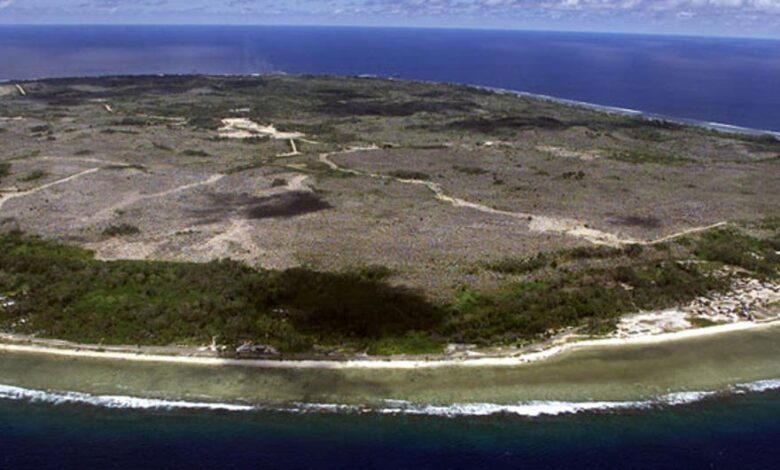Ex-detainee of Australia’s offshore refugee detention centre shares fears over UK Rwanda plan

When Ellie Shakiba arrived on Nauru island – a 21 square kilometre patch of rock in the pacific ocean – she thought she wouldn’t be there for long.
She had survived a perilous journey from Iran, through Indonesia, into the hands of people smugglers and across the Indian Ocean.
Her head full of warm expectations about the Western world, she had hoped that Australia would house her as a refugee. Instead she was shipped to a detention centre 2,800 miles away.
Looking around, there was very little except a collection of nylon tents covered inside and out with carcinogenic Cadium-laced dust – a hang up from when 80 percent of the island nation had been destroyed by phosphate mining. She would be there for six years.
“It was built to make an example of us,” she told The Independent. “To say, this is what will happen to asylum seekers who come to Australia by boat.”
Speaking from the United States where she now lives, she spoke of her concerns that the decisions of the Australian government are now being repeated by the UK.
“They were punishing us to scare the world and to try to stop people coming to Australia,” she said. “And that is exactly what Priti Patel is doing.”
Ms Patel’s Rwanda policy dramatically failed to get off the ground last month when seven refugees due to be sent to the central African country successfully challenged their deportation.
The home secretary had said that the UK’s partnership with Rwanda would send a “clear message that illegal entry will not be tolerated”.
In a speech to the House of Commons, she described the policy as a “practical, humane way forward for those who arrive to the UK by illegal routes”.
The Home Office rejected the comparison between its Rwanda policy and the Australian model, branding it “fundamentally wrong and inaccurate”.
One of the key differences is that anyone sent to Rwanda would not be detained, the government stressed.
But for Ms Shakiba, who has made a documentary film about her time on Nauru, the UK policy is destined to be a failure just as she says the Australian policy was.
“It never succeeded to solve the problem,” she said. “Ten thousand people have arrived by boat this year to the UK. Are they going to send 10,000 people to Rwanda? Of course not.
“They pick some Iranians and some Afghans and send them as an example. The same thing is happening again.”
A still from Ellie Shakiba’s film shows a mocked up image of the Nauru detention centre
Australia used Nauru, along with Papua New Guinea, as a remote site for the “offshore processing” of people seeking asylum and have arrived to the country by boat. It is government policy that no one who arrived in this way can ever settle in Australia.
The conditions on Nauru, which is still home to around 115 asylum seekers, have been a particularly stark example of the impact of sending refugees to live in immigration limbo.
“Most of the people in Nauru grew numb and sceptical to any talk of leaving the island,” Ms Shakiba said. “Until they saw it happen with their own eyes they would not believe it.”
“We were given just enough good news to start to hope again, only to have it dashed soon after.
Australia’s Nauru policy led to protests like this one in Melbourne in 2020
A rare image captured of a child in Nauru detention centre, where cameras are scarce





